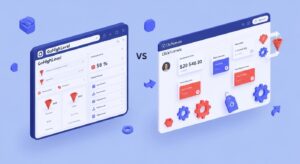From Chaos to Consistency: Building Agency Systems That Scale

Many groups begin in the same way. Just a few clients, a small team, and the ability to keep track of everything with spreadsheets, chat apps, and quick messages. This works at first. But things that were once doable start to fall apart as more clients sign up and tasks grow. People forget to check their emails and stay up to date, and choices are made based on their own memories instead of solid methods.
A company either stops growing or starts to change at this point. Agencies need to switch from improvising to planning if they want to grow effectively. They require scalable agency systems that permit expansion without compromising the level of service that earned their customers’ trust in the first place. It takes planning to set up these processes, but once they’re there, they make it possible for the business to grow, run more smoothly, and give customers a better experience.
The High Cost of Operational Chaos
It takes time for operational chaos to set in. It slowly grows as more accounts are added and work gets busier. It’s possible for a growth agency to have great creative ideas, but if they can’t communicate or deliver on time, clients will be angry and the agency’s great ideas will be ignored.
Members of a team use their own methods to keep track of work when there aren’t any organized systems in place. Some people use their own task managers, others use sharing files, and a lot of people keep important information in their email. Over time, this causes work to be done twice, service to be uneven, and a general lack of awareness. Clients start to notice how disorganized the service is, and they are more likely to leave.
McKinsey has pointed out that as a business grows, it can lose up to 30 percent of its output if it doesn’t have uniform operating systems. These errors not only slow down service for agencies, but they also make it harder for them to grow. Teams spend their time putting out fires instead of working on strategy and new ideas.
Why Systems Create Stability
When agencies use organized systems, they get rid of doubt and replace it with sure. A well-thought-out method tells people how to share information, set priorities for jobs, and check for success. It makes sure that the main processes don’t change no matter who joins the team or how many clients are added.
Systems also make people less dependent on each other. Instead of just one account manager knowing important things about a client, that information is collected, saved, and available to everyone on the team. This security is very important for growing because it makes handoffs go smoothly and delivers what was promised with fewer surprises.
According to study from HubSpot, businesses that use standard processes have much better customer happiness rates than those that use creative ones. This change often means the difference between agencies trying to keep up and comfortably growing.
The Role of CRM in Building Structure
A lot of the time, CRM tools are the first big step toward making something scalable. All customer information, contacts, and tasks are now in one place. This gets rid of the split that makes things hard to run. A CRM helps a business keep track of everything. All contacts and successes are recorded, and teams can quickly access the information they need to make smart decisions.
Businesses can serve more customers without lowering the quality of their work with this uniform system. A quick way for new team members to get up to speed is for them to look over CRM records instead of putting together pieces of talks.
A CRM does more than just keep things in order; it also gives you information. Information helps leaders decide how to best use resources and keep track of where projects are at all times. This makes agencies work more like well-run businesses and less like a bunch of different teams
SaaS and Automation as Growth Multipliers
For framework, CRM is the most important thing. SaaS models and automation speed up growth. A lot of companies depend on bills based on projects, which can lead to uncertain income. By using SaaS models, businesses create steady lines of income that keep their cash flow stable. They can then spend the money on better tools, more skilled workers, and long-term growth plans.
Automation adds to this by freeing up the team from doing the same things over and over again. Systematizing follow-ups, training steps, reporting rounds, and notes for approvals are all things that can be done. After that, teams can focus on strategy projects instead of constantly dealing with tasks.
Research by Gartner has shown that companies that use technology carefully cut costs and boost output by a large amount. This means that agencies should be able to grow their operations without adding extra management work. They don’t need to hire more people to do the same work because they have tools that do it all for them.
Creating Consistency Through Repeatable Frameworks
For scalability to operate, anything has to be able to be done again and over. As the firm expands, it’s tougher to keep up with chores since you have to perform various things for each customer. Agencies develop templates for things like recruiting, starting a campaign, writing reports, and doing performance evaluations. This way, all of their customers, no matter how large their account is or who works on it, receive the same great service.
When people have a solid structure around them, they are more inclined to be innovative. Frameworks help teams concentrate on strategy and new ideas by getting rid of ambiguity and unnecessary tasks. This makes things better and more professional for customers, and it helps teams perform better and with less stress.
According to a research by McKinsey, models that are well-organized are favorable for both customers and staff. This consistency might provide a firm with tight deadlines and high standards an advantage over its competitors.
Aligning Teams Around a Shared Vision
It’s not only about technology; it’s also about how things work together. When an agency becomes bigger, various teams sometimes start to operate in different ways, which may be hard. Account managers, planners, and creative teams may all operate in separate “silos,” which may make it impossible for individuals to communicate to each other and get things done faster.
To create adaptable systems, everyone in the firm must speak the same language and follow the same actions. Everyone works together on CRMs, SaaS solutions provide you solid methods to generate money that fit your goals, and automation makes sure that activities get done without having to be reminded all the time.
When everyone follows the same rules, it becomes simpler to work together. This agreement shows customers that we communicate and execute consistently, which develops trust and decreases conflict.
Measuring Scalability for Continuous Growth
Systems are only helpful if they can adapt to the company’s needs. Agencies need to periodically utilize quantifiable signals to see how well they are performing so they can keep growing. Metrics like shipment times, customer satisfaction, company expenses, and renewal rates show clearly how effectively systems are operating.
HubSpot says that these results should be used to keep making things better at the firm. As agencies grow, they need to adapt how they do things so they can manage more information without becoming less valuable. This way of assessing and developing keeps things growing and prevents the organization from becoming out of control again.

Conclusion
Agencies that solely employ their imagination will eventually run out of ideas. As things grow, they become more intricate, and complicated things require order. By adopting scalable agency systems, a business may go from reactive management to proactive leadership.
CRM helps you stay organized, SaaS helps you stay stable, and automation saves you time and labor. These are all good ways to develop your business without sacrificing quality. Agencies can concentrate on fresh ideas and helping their clients succeed when they structure their work, apply models again and over, and have teams work together.
Making these approaches isn’t about stifling creativity; it’s about providing it the focus and steadiness it needs to function. Agencies may develop with confidence when they have robust procedures in place because they know that their operations will grow with them.







